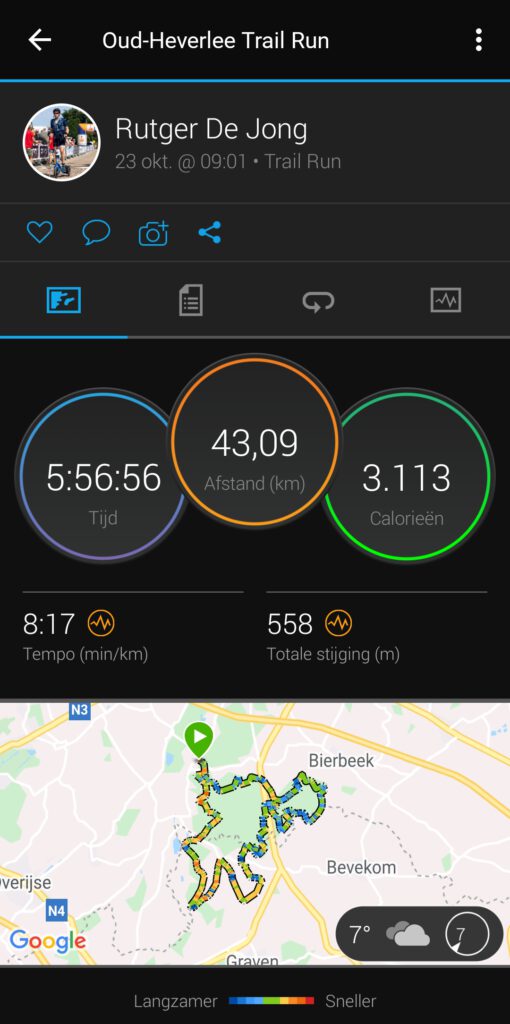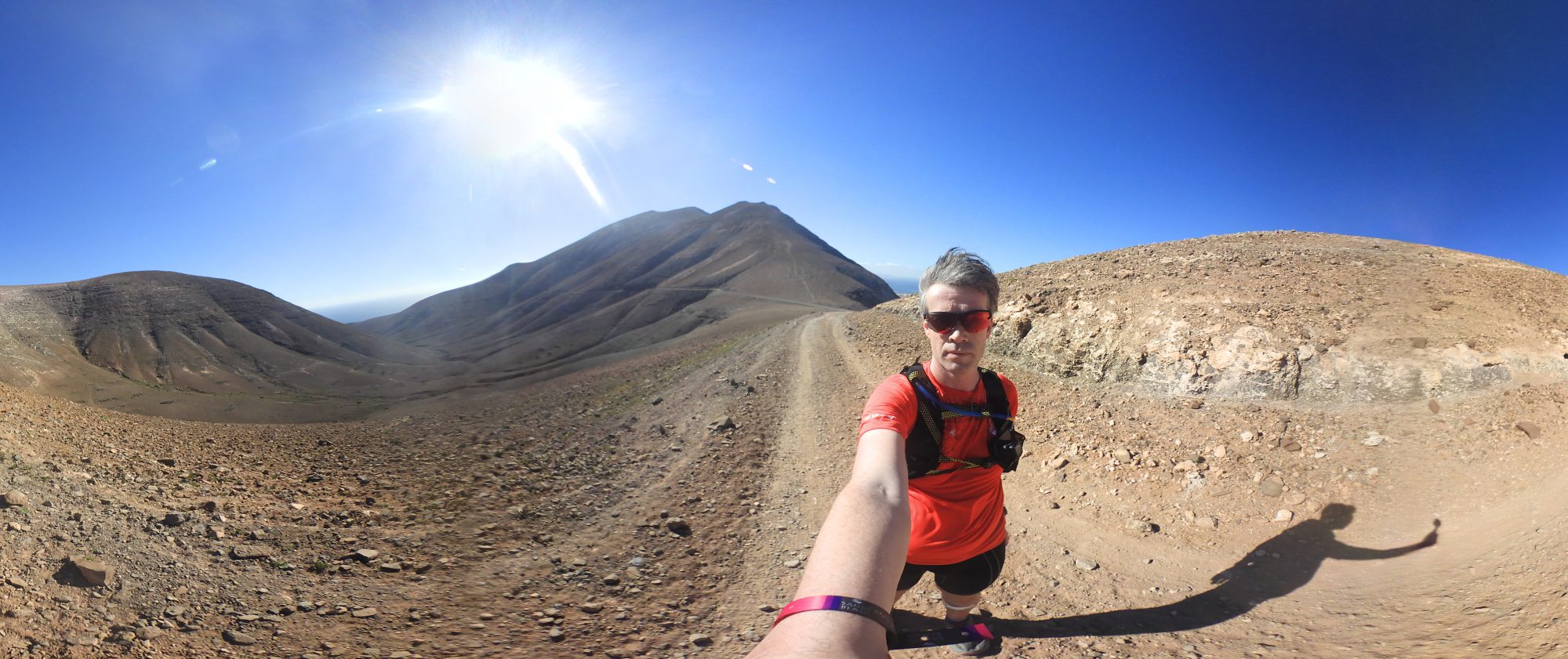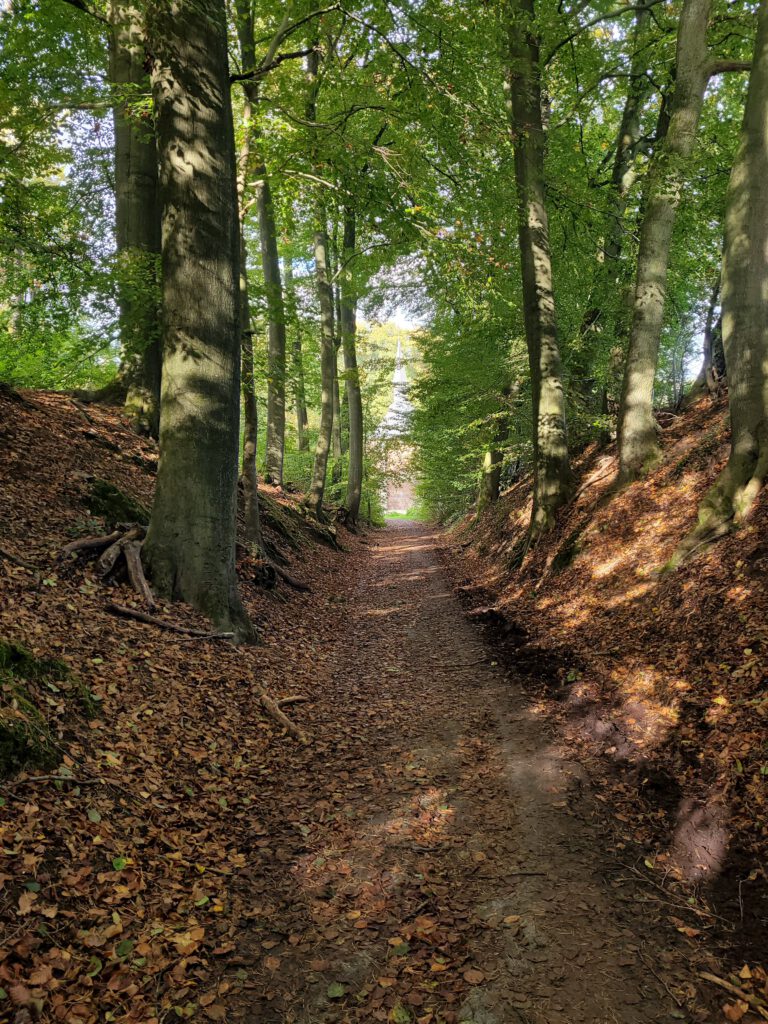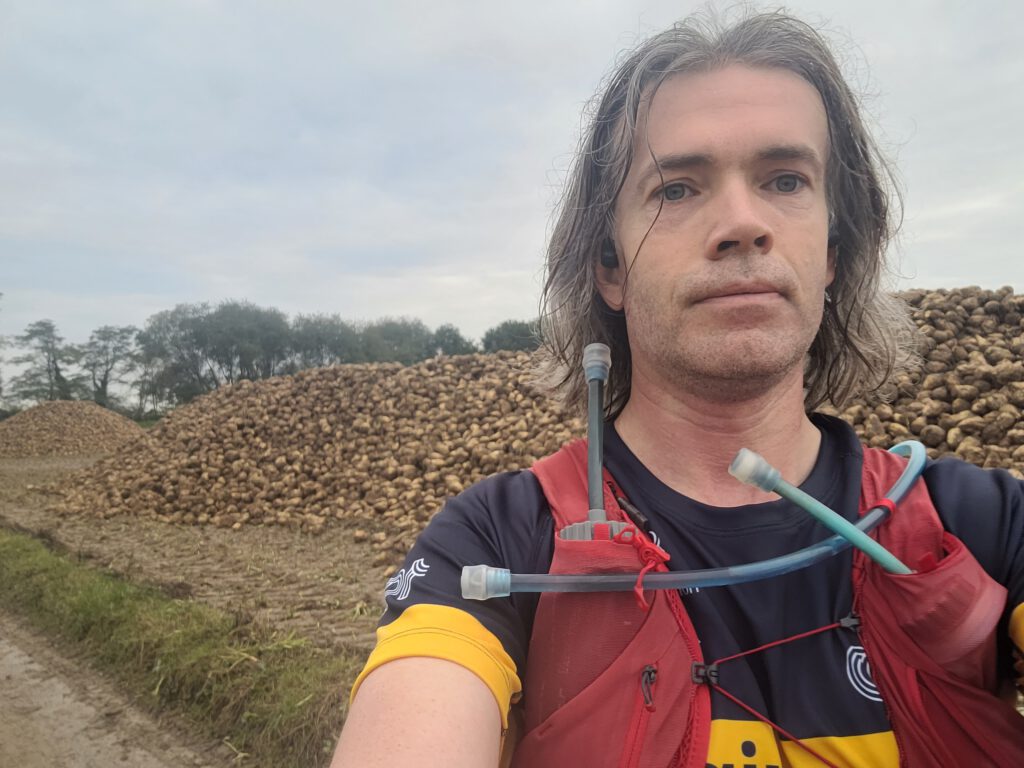
My second trail in Oud-Heverlee was organised for and by diabetics. Even though the food didn't go entirely well, it is still important that we can show young people that they are capable of anything. And of course it is a beautiful environment to explore.
For some time now, Fleming Olivier Kronal has been organising with Diasports a trail series with its own classification for diabetics. He himself had to stop working in the military when he contracted diabetes in 2009. But that has not stopped him from continuing with an adventurous and physical life. Olivier is a very accomplished ultrarunner, he ran the Marathon des Sables and has a grand slam of the Legends Trails (3 trails of 160 km and 1 of 250 km in one year). This makes him a great example for other diabetics: you can follow your dreams. Okay, I will never make the grand slam for other reasons, but he did inspire me to run long distances. And inspiring others is exactly the reason why his trails have an extra ranking, with which type 1 diabetics can show that they can perform just like others.
Because of corona, the trails had to be stopped for a while, and I myself had some trouble crossing the border, but I'm glad I was able to run again. In 2019 I ran in the Meerdaal forest together with Simone the 25 km Diatrailwhich was pretty tough because my father-in-law had just passed away. But the beautiful surroundings and the concept left me wanting more, so I decided to sign up for the trail marathon immediately when a new trail was announced.
Hunted game
This time I had to do it without a lift, but I stayed in Leuven. The last part to the start was therefore done by public transport. The timing was tight, I would arrive about 20-25 minutes before the start and still had to put on a number. That's the thing with starting early in the weekend and public transport. In itself it was doable. Until I got off the bus, followed the schedule and found that I was at the old start location – now coronation location.
How could I get to the start in time? The stress was already making the blood sugars rise considerably. I walked behind the grounds along – a sports park – and of course tried to get to the right start, the tennis club, as quickly as possible. Well, taking the shortcut across the football club grounds turned out to be a bad choice. I bumped into a fence and had to go back again. Time was running out and I already thought: that will be an unofficial restart if it is still possible.
I arrived in a hurry just a few minutes before 9... Fortunately, they were kind enough to postpone the start of the trail for a few minutes for this crazy Dutchman. He hurriedly pinned on his start number and waved away wishful thinking that his soft flask would leak (no, not because of the pressure) when a volunteer pointed it out to him. Only to have the straw half in his hand a little later and quickly drink the bottle empty. I didn't really want to do that because my blood sugars were already so high due to the stress... Especially for diabetics, a calm start is so important in order not to forget anything and to have better blood sugars. But I really did it myself, because hardly anyone else seemed to care about the short delay.
Once I started, it was also difficult to calm down the adrenaline. It was really hard to slow down and at the same time my lungs felt very oppressive. Time to sink back into my thoughts and enjoy the scenery.
Handbrake on
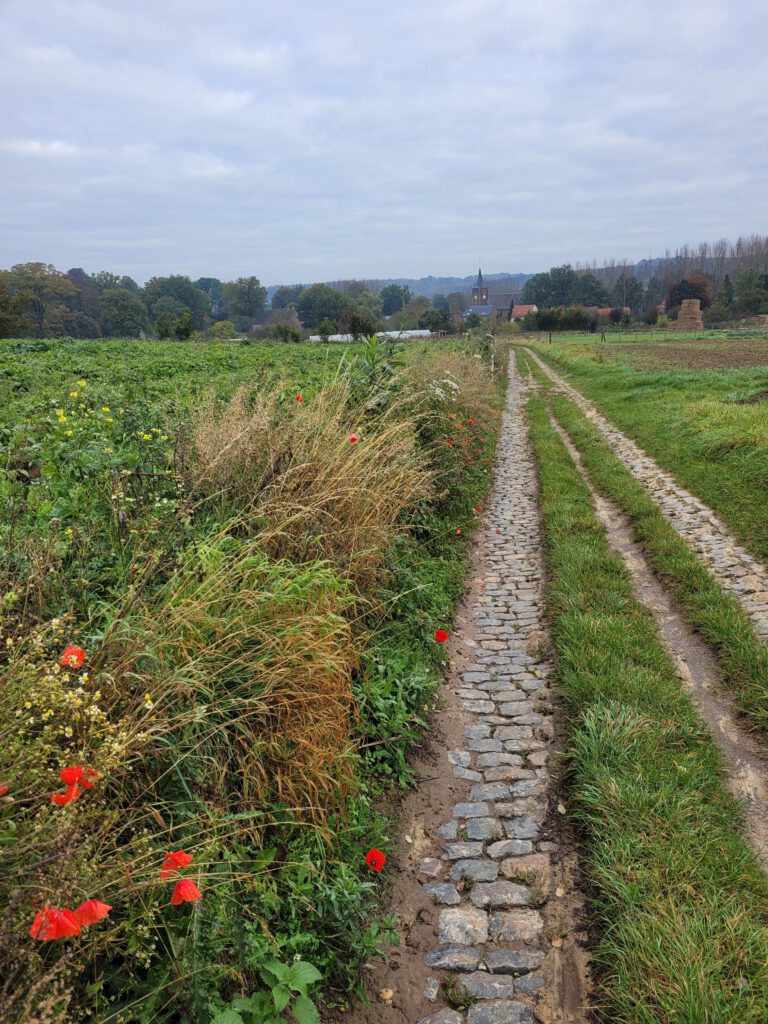
It is sometimes a bit like asking the gods if you are doing a trail just to show that it is also possible for diabetics. Unfortunately, since the Beartrail I was struggling with annoying feeding problems. In other words: no matter what I did, I couldn't get my blood sugar up and I was constantly running with a kind of handbrake. Not to mention how exhausting that is (it only went well again on Wieringen).
Despite the fact that I started so high, and that I drank the bottle of Ucan, after an hour of running my active fuel was gone. Since then, I have been eating continuously. Every 2-3 km again. Then you immediately see the limitation that we do have – okay, surmountable – if it does not go well, we are busy with nothing but the blood sugars. One by one, the other runners then pass you by. And sometimes that can be very frustrating.
The nice thing about trails is that hardly anyone is surprised if you take a walk or slow down. Certainly not when you think you are alone in the world with such a limited number of participants over a 43 km course. This was very different at the Leiden marathon a week earlier. There, too, I found myself – earlier even – in the trap of fuel shortage. But then you are immediately told off by the public for walking at 12 km. In the end, I had to abandon the marathon, I just couldn't get the blood sugars stable and I got really nauseous. I definitely wanted to avoid that during this trail. Finishing the run, walking if necessary to avoid dropping too low in blood sugars, was the goal.
Intervals
My speed and way of running also immediately reflected when blood sugars started to rise again. A load of power was then immediately released. That gave me the confidence that in terms of fitness things were okay. At first, I assumed that the problem was partly caused by fatigue (not absorbing fuel well), those who follow me on Strava will have seen that I trained less for a while, but that doesn't seem to be it either. In retrospect, I think there were three things at play: running faster which takes more energy, being put off by high values at the start – sometimes I hate the sensor – and a ratio of long-acting to short-acting insulin that works adversely during exercise.
Fortunately, the course was also quite good for me; downhills I often had just enough energy and could make use of the terrain to run efficiently. In the hills I had to refuel with food. And it can get steep in that area. The fact that there was a relatively large amount of asphalt or cobbles also helped to recover some speed. Detail: many of the cobbled paths down seemed to have been built mainly because otherwise the soil would wash away. So do not expect an easy descent in those parts either.
Volunteers
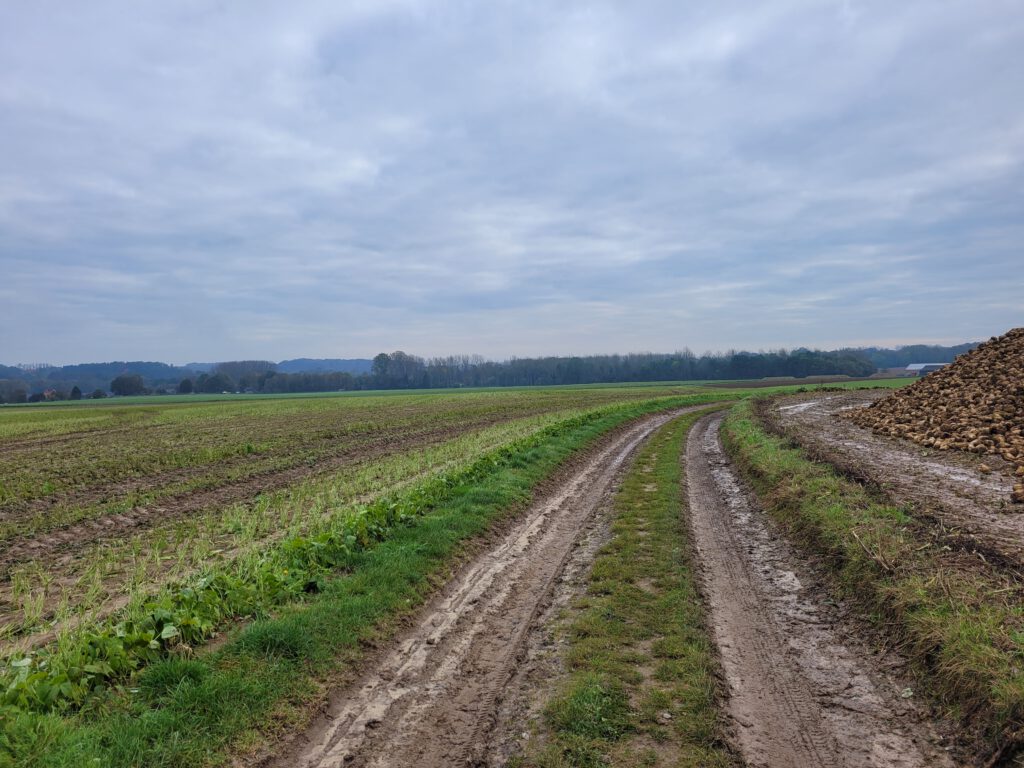
Walking through the woods and fields, it seems as if you are all alone in the world. No thousands of participants like in Rotterdam. Only 36 people participated in the whole marathon distance, including a number of walkers. Personally, I often enjoy running alone. It's nice to walk at your own pace, to be absorbed by nature, to be caressed by the sun and to sing without anyone complaining. But it is also very nice to see some living souls at the care posts.
In this case, most of the supply stations were manned by parents of young people with diabetes. That's very nice. Not only for us, because they often know a bit more about how to deal with diabetics, but also for them to see that we can still happily hop through the fields at distances that some people find far ‘with the car. They also gave us a boost to get going again.
I often walk past posts because I have almost all the food in my jacket – lesson 1: always look after yourself – but now I took my time. And it is always good to fill up with coke. That almost went wrong: on the trail there was also sugar-free cola available (Pepsi Max). Why, the non-diabetics will no doubt ask themselves. Well, sometimes blood sugar is hard to come by. Especially then you have to drink a lot (it goes faster) and sometimes you get tired of your own water while all alternatives contain sugar. To run well, our blood sugars really need to be in the right range. Which values that are exactly depends very much on the person.
Real hunters

Was it really that alone on the route? Most of the time, yes. Until I turned into a meadow and suddenly came across a large number of men with camouflage clothes and sticks. I had heard from my family – Frisian farmers – that they still hunted game for the hunters once a year. But I had never seen this in real life. It was a large and colourful company that was followed a little later by a couple of hunters with rifles and large dogs. It was very special to see this tradition, but as a moving target I was glad that the hunt was already over.
Not much later, I came across a meadow where a route for a Halloween hike had been set out. Apart from a single walker, it was quiet as a mouse. Once back in the woods, Peter also passed me. Not only is he diabetic, but he also has another autoimmune disease, which has greatly reduced his lung capacity (autoimmune diseases rarely come alone). Because the weather was a bit muggy, he would therefore hike, although I had long expected him to overtake me, as he is simply much faster. Anyway, he gave me a nice goal to try and keep up with him for a while, until the bike was dry again. It was quite a sight to see him in the distance: a small yellow man between the huge trees of the Meerdaal forest.
Only in the last few kilometres did the fuel supply seem to improve. I even managed to overtake a few running teenagers (after running 40 km, yes), but felt some fatigue. Still, I managed to sprint to the finish and roll in well under 5 minutes/km. I am not dissatisfied with the time myself, 5:53:17, even though I was last in the diabetes classification (place 26 of 36).
How did the other diabetics do? A total of 17 diabetics openly participated in all distances, plus about 5 more who are not listed as such in the classification, out of 198 participants. For the 21 km, third place men overall is a diabetic, for the 42 km, third place men overall is a diabetic and for the ladies, second and third place are diabetic. Hopefully we have shown that nothing needs to stop you from running long distances as a diabetic. Even if you're not doing well, you can still make it.
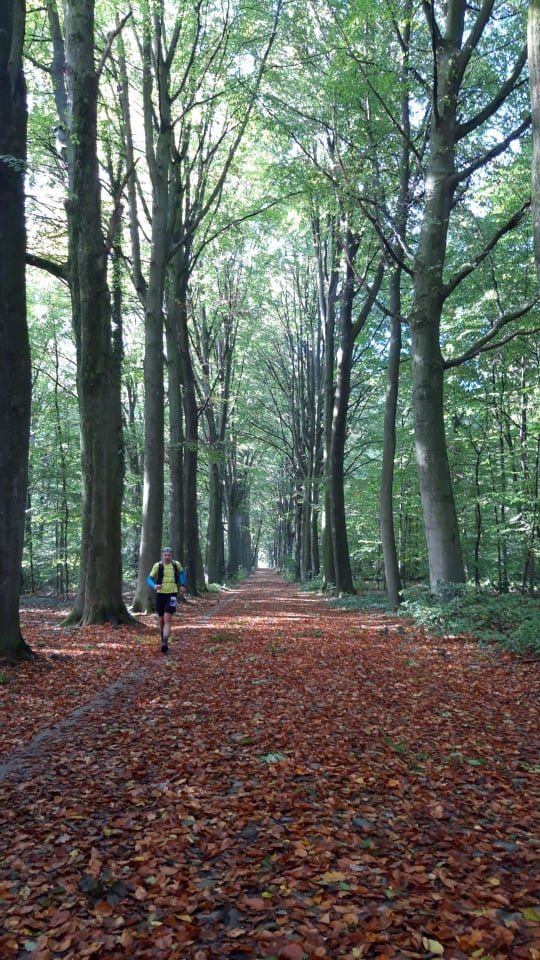
Photo: Diasports 